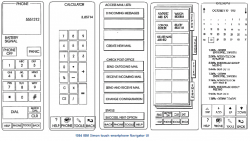And larger screens is a perfect example of markets moving towards a different form factor. Is this copying? Apple wasn't first to market with a larger screen, and even defended smaller screen with the one hand argument.
WRONG! The original iPhone had a larger screen than any other smartphone on the market and was the first smartphone to use full screen for everything rather than tiny blackberry-style buttons with a smaller screen as the others did. THEN the other companies followed Apple.
Apple was also the first to come out with the largest screen notebook computer, the 17" Powerbook. Do your homework Homer.
No YOU will scream, because you were wrong.I guess you will scream,
In my humble opinion,
Yep, exactly, all of this was YOUR opinion, but I wouldn't call any of your post "humble".



